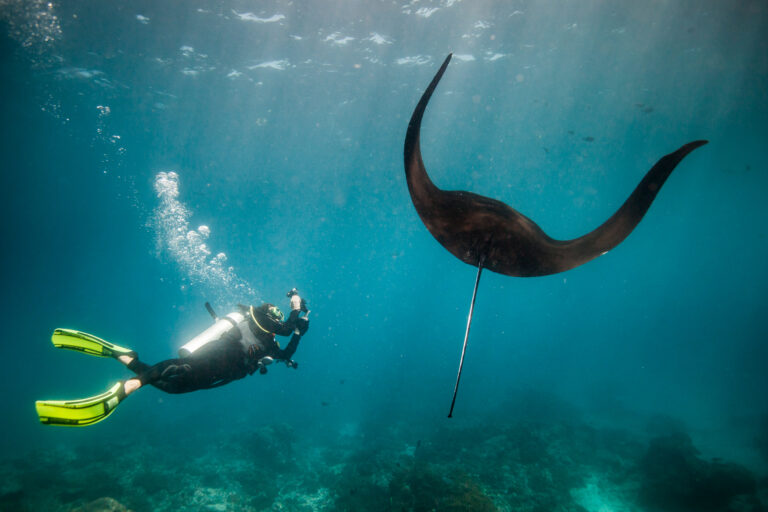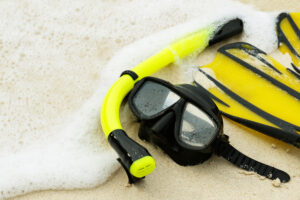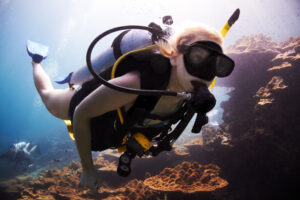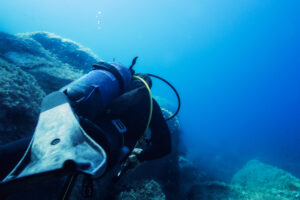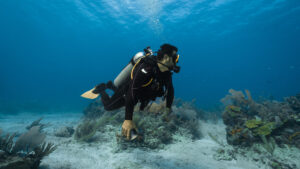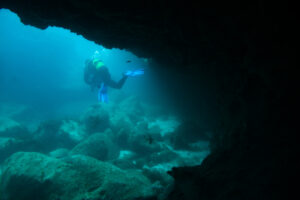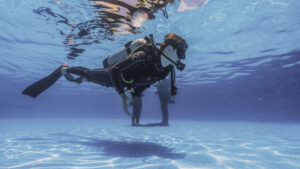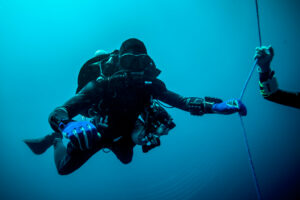What is a Helicopter Turn when Scuba Diving, Freediving or Snorkeling?
The helicopter turn is a vital scuba diving maneuver that allows divers to rotate around their vertical axis using minimal fin movements. This technique enhances underwater mobility, control, and agility, enabling divers to navigate through tight spaces, maintain their position while observing marine life, and efficiently change their orientation without disturbing the environment. In this comprehensive entry, we will discuss the mechanics, benefits, and applications of the helicopter turn, as well as provide tips for mastering the skill.
Mechanics of the Helicopter Turn
The helicopter turn is achieved through the precise coordination of body positioning, buoyancy control, and fin movements. The key steps involved in performing the maneuver are as follows:
- Establish neutral buoyancy: Before initiating the turn, divers must achieve neutral buoyancy to minimize their vertical movements during rotation. Proper buoyancy control is essential for a smooth, controlled helicopter turn.
- Position the body: Divers should maintain a horizontal position with their arms either folded across the chest or extended to the sides. Keeping the legs straight and slightly apart allows for better balance and control during the turn.
- Fin movement: To initiate the turn, divers should gently scissor kick their fins, with one fin moving forward while the other moves backward. This creates a propulsive force that causes the diver to rotate around their vertical axis. The diver should maintain this fin movement throughout the turn, adjusting the force and speed as needed to control the rotation.
- Breathing and buoyancy control: During the turn, divers should maintain a steady breathing pattern and continuously adjust their buoyancy to ensure a smooth and stable rotation.
Benefits of the Helicopter Turn
The helicopter turn offers several advantages for scuba divers, including:
- Enhanced mobility: The ability to rotate on the spot allows divers to change their orientation quickly and efficiently, making it easier to navigate through tight spaces and complex underwater environments.
- Improved observation: By performing a helicopter turn, divers can maintain their position and observe marine life from different angles without the need to swim around or change their depth.
- Reduced environmental impact: The helicopter turn requires minimal fin movements, which reduces the risk of damaging delicate marine habitats or stirring up sediment that can reduce visibility.
- Increased safety: Mastering the helicopter turn improves overall diving skills, including buoyancy control and spatial awareness, which can help prevent accidents and enhance diver safety.
Applications of the Helicopter Turn
The helicopter turn is a versatile maneuver with numerous applications in recreational and professional diving, such as:
- Wreck diving: Navigating through the confined spaces of a sunken ship or structure requires precise control and maneuverability, making the helicopter turn an invaluable skill for wreck divers.
- Cave diving: The ability to rotate on the spot is crucial for cave divers, who must navigate through narrow passages and tight spaces without disturbing the fragile cave environment.
- Marine life observation: Wildlife photographers and marine biologists can benefit from the helicopter turn, as it allows them to observe marine creatures from multiple angles without disturbing their natural behavior.
- Search and recovery: The helicopter turn is useful for divers engaged in search and recovery missions, as it enables them to scan a large area while maintaining a stable position.
Tips for Mastering the Helicopter Turn
- Practice buoyancy control: Achieving neutral buoyancy is a prerequisite for a successful helicopter turn. Divers should practice buoyancy control exercises, such as hovering and fin pivots, to develop this skill.
- Start with shallow turns: When learning the helicopter turn, begin with shallow rotations and gradually progress to full 360-degree turns as your skill and confidence improve.
- Use appropriate fins: Longer, more flexible fins are better suited for the helicopter turn, as they provide greater propulsion with minimal effort. However, divers should experiment with different fin types to find the one that best suits their individual preferences and diving style.
- Focus on balance and coordination: The key to a smooth helicopter turn lies in maintaining balance and coordinating fin movements. Divers should focus on keeping their body centered and adjusting the force and speed of their fin movements as needed to control the rotation.
- Practice in controlled environments: Before attempting the helicopter turn in open water, divers should practice the maneuver in controlled environments such as swimming pools or confined water training sessions. This allows them to develop their skills and confidence without the added challenges of currents, waves, or poor visibility.
- Learn from experienced divers: Observing and learning from experienced divers who have mastered the helicopter turn can provide valuable insights into the nuances of the maneuver. Participating in workshops or advanced scuba diving courses can also help divers refine their skills and learn new techniques.
Key Takeaways
The helicopter turn is a vital scuba diving skill that enables divers to rotate on the spot on a vertical axis using minimal fin movements. Mastering this maneuver not only enhances underwater mobility and control but also allows divers to observe marine life and navigate through challenging environments with minimal environmental impact. By focusing on buoyancy control, balance, and coordinated fin movements, divers can develop their helicopter turn skills and become more adept at navigating the underwater world.

